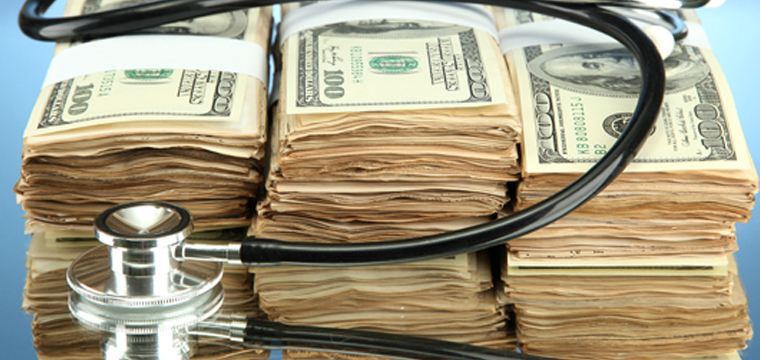Setting up a health fund
Staying healthy is a challenge when we are constantly bombarded with pressures coming from work and home.

DO you know that heart attack, stroke and cancer are the leading causes of mortality in the Philippines? Health Undersecretary Teodoro J. Herbosa warns the public about the alarming increase in number of cases of the lifestyle diseases in the country. According to Kicker Daily News, data from the Department of Health 2009, World Health Organization (WHO) 2010, Philippine Cancer Society 2010 revealed that:
- 276 Filipinos die of heart disease every day;
- five people die of respiratory disease every hour;
- one person dies of stroke every nine minutes;
- nine people are diagnosed with cancer every hour; and
- 61 people die of diabetes every day.
With this startling statistics, we cannot just ignore the possibility that all of us are exposed to various risks factors in our environment that tend to aggravate the above health conditions.
In reality, 97 percent of Filipinos value the importance of protecting the health of their family. However, the sad part is that only 16 percent of Filipinos are prepared to face the financial consequences once diagnosed with a serious medical condition or critical illness.
For those who are not prepared, they admit that they will have to dig into whatever savings they have, divert allocated funds for other financial goals, resort to borrowing from relatives, pawn their valuable jewelries, or even sell assets to cope with medical expenses. While those with health maintenance organization (HMO) cards will still have to shell out cash once the coverage limitations for covered illness are optimized. For some business owners, the unexpected large medical bills due to critical illness may possibly affect their cash flow, liquidity and even erode capital fund.
So, the most practical thing to do is to make sure that you have set up an emergency fund. As mentioned in a previous column, an emergency fund is an amount of money which is specifically set aside to respond to unexpected financial emergencies. One of these financial emergencies is unexpected hospital confinement due to accident or illness. However, for critical illness, it is recommended that a separate health fund be allocated among the nondiscretionary items of our spending plan.
With the spiraling cost of health care, your emergency fund can easily be depleted once you are diagnosed of a critical illness. A critical illness typically requires continuous treatment and medication. In many cases, the doctor may recommend an immediate major operation or surgical procedures which could leave you financially drained. A smarter way to protect yourself from future medical expenses, which can wipe out your lifetime savings and put you in debt with a single hospitalization, is to supplement your company-sponsored HMO coverage with a health insurance.
There are different types of health insurance ranging from reimbursement of medical expenses up to a defined coverage limit or the unit-linked health-insurance products which are currently marketed by the leading life insurance companies to respond to the growing numbers of emerging lifestyle diseases and critical illnesses. An important distinction between the HMO and health insurance is that the HMO pays the hospital for services rendered to the member while the health insurance releases funds to the insured based on policy benefits.
The beauty of unit-linked health insurance products is that the critical illness rider provides lump-sum cash benefit upon diagnosis of any of the identified critical illnesses. On top of that, units may be redeemed for additional funding needs. The advantage of this type of plan is that premiums paid can accumulate over a period of time based on the performance of selected investment funds allowing it to grow beyond inflation rates over the long term in contrast to saving the fund in a bank with low savings yield of 0.25 percent per annum. Finally, the best part is that the insurance coverage can last for a lifetime as long as there are account values compared to a yearly renewable plan that terminates at a certain age.
A financial plan cannot be complete if you do not protect the most valuable asset—you. It is best to consult a financial planner to help you figure out what is the best strategy based on your individual circumstances.
Staying healthy is a challenge when we are constantly bombarded with pressures coming from work and home. These inevitable life realities are things we need to prepare ahead of time because we can never tell when a medical emergency will happen.
A health fund can be a vital financial safety net that responds to setbacks that may happen in our life much like carrying a spare tire in our car. It gives you the peace of mind that when illness strikes, financial worries will be the least of your concern. Life happens. A comprehensive health fund, like a spare tire, smoothen the road ahead of us in case of any contingency.
 Arlyn Cheng is a Registered Financial Planner of RFP Philippines. She is a Financial Advisor of a leading insurance company in the Philippines.
Arlyn Cheng is a Registered Financial Planner of RFP Philippines. She is a Financial Advisor of a leading insurance company in the Philippines.
Source: http://www.businessmirror.com.ph/index.php/en/business/banking-finance/38447-setting-up-a-health-fund
Comments
3,282 total views, 1 views today












Social